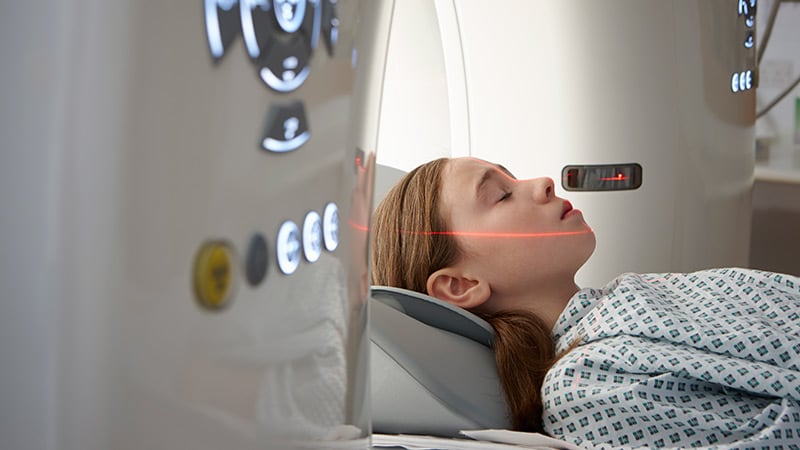CT Scans and Malignant Hematopathies in European Children
Core Concepts
CT scans in children pose a risk of malignant hematopathies, with even low doses of ionizing radiation increasing the likelihood of cancer.
Abstract
The content discusses the risk of malignant hematopathies in European children undergoing CT scans, focusing on the EPI-CT study's findings. It highlights the increased risk of leukemia with repeated scans, the association between cumulative dose and malignant hematopathies, and the importance of justifying and optimizing pediatric CT scans to minimize risks.
European Children and CT Scans
- Over a million European children undergo CT scans annually.
- Moderate to high doses of ionizing radiation increase the risk of malignant hematopathies.
- Risk from low doses (< 100 mGy) during CT scans in children is unknown.
EPI-CT Study
- Evaluated cancer risk in children after exposure to low doses of ionizing radiation.
- Followed a European cohort of 948,174 patients who had CT scans before age 22.
- Found an association between cumulative dose and malignant hematopathies.
Risk Factors and Observations
- 790 malignant hematopathies diagnosed, including lymphoid and myeloid hematopathies.
- Higher rates observed for doses > 10 mGy, with a rate of 2.66 for doses > 50 mGy.
- Rate of malignant hematopathy increased with older age at radiation exposure.
Implications and Recommendations
- Study confirms higher cancer risk at low radiation doses.
- Emphasizes the need to justify and optimize pediatric CT scans.
- Suggests considering MRI or ultrasound as alternatives to CT scans.
Customize Summary
Rewrite with AI
Generate Citations
Translate Source
To Another Language
Generate MindMap
from source content
Visit Source
www.medscape.com
CT Poses Risk for Malignant Hematopathies Among Children
Stats
"More than a million European children undergo a CT scan each year."
"The rate of malignant hematopathy increased with older age at the time of radiation exposure."
"For every 10,000 children examined today, 1-2 could develop a radiation-related malignant hematopathy in the next 12 years."
Quotes
"CT scans in children pose a risk of malignant hematopathies."
"An association was shown between cumulative dose to the bone marrow and the risk of developing malignant hematopathy."
"This study confirms the higher risk for cancer at low radiation doses."
Key Insights Distilled From
by Pr Audrey Ro... at www.medscape.com 01-23-2024
https://www.medscape.com/viewarticle/ct-poses-risk-malignant-hematopathies-among-children-2024a10001nf
Deeper Inquiries
How can healthcare providers balance the diagnostic benefits of CT scans with the potential risks of radiation-induced cancer in children?
Healthcare providers can balance the diagnostic benefits of CT scans with the potential risks of radiation-induced cancer in children by following certain guidelines. Firstly, it is essential to adhere to the ALARA (As Low As Reasonably Achievable) principle, which emphasizes minimizing radiation exposure during scans. This can be achieved by using appropriate pediatric protocols, adjusting the scan parameters based on the child's size, and utilizing newer technologies that reduce radiation doses without compromising image quality. Additionally, healthcare providers should carefully weigh the necessity of each CT scan, opting for alternative imaging modalities like MRI or ultrasound when feasible. Educating both healthcare professionals and parents about the risks and benefits of CT scans in children is crucial for making informed decisions and ensuring that scans are only performed when truly necessary.
What are the ethical considerations surrounding the use of CT scans in pediatric patients, considering the increased cancer risk?
The use of CT scans in pediatric patients raises several ethical considerations, especially in light of the increased cancer risk associated with ionizing radiation exposure. One key ethical concern is the principle of beneficence, which requires healthcare providers to prioritize the well-being of the child. This involves weighing the potential benefits of a CT scan in terms of accurate diagnosis and treatment against the long-term risks of radiation-induced cancer. Healthcare providers must also consider the principle of non-maleficence, ensuring that the potential harm from radiation exposure is minimized and justified by the diagnostic value of the scan. Informed consent becomes crucial in pediatric imaging, as parents or guardians need to be fully informed about the risks and benefits of CT scans to make decisions in the best interest of the child. Additionally, healthcare providers have a duty to advocate for the child's safety and well-being by following best practices in radiation dose optimization and considering alternative imaging modalities whenever possible.
How can advancements in technology help reduce radiation exposure in pediatric imaging studies?
Advancements in technology play a crucial role in reducing radiation exposure in pediatric imaging studies. One significant advancement is the development of iterative reconstruction techniques, which allow for high-quality images to be obtained at lower radiation doses. These techniques use sophisticated algorithms to reconstruct images from raw data, reducing noise and artifacts while maintaining diagnostic accuracy. Another important technological advancement is the use of dose modulation software, which automatically adjusts radiation doses based on the size and tissue density of the child, ensuring that only the necessary amount of radiation is delivered. Furthermore, the integration of artificial intelligence (AI) in CT imaging can help optimize scan parameters, improve image quality, and reduce radiation doses by tailoring the imaging process to individual patient characteristics. By leveraging these technological advancements, healthcare providers can minimize radiation exposure in pediatric imaging studies while still obtaining the diagnostic information needed for optimal patient care.
0
